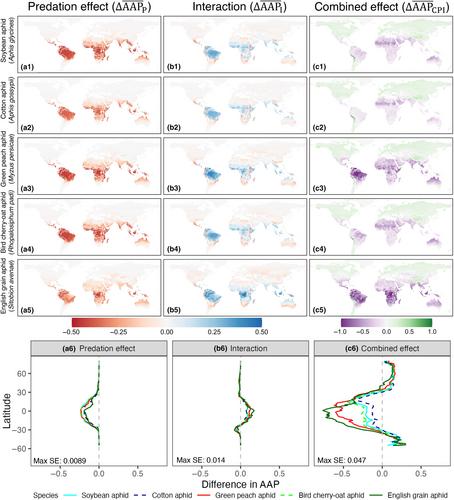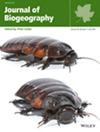Robust species distribution predictions of predator and prey responses to climate change
Abstract
Aim
Species distribution models (SDMs) can be correlative or mechanistic, which have very different assumptions, leading to potentially different estimates of the ecological niches and distributions of the species. The model predictions from correlative and mechanistic approaches are incomparable due to their distinct assumptions. Yet, seeking their agreements can identify robust predictions that are relatively independent of the assumptions used to generate them. However, the search for robust model predictions among SDM models remains understudied and rarely considers the effect of biotic interactions. It is essential to identify robust predictions from SDMs for policy making.
Location
Global.
Time Period
1970–2000/1980–2000 and 2081–2100.
Major Taxa Studies
Aphids.
Methods
In this study, we selected five aphid species as examples, and applied an ensemble model of multiple correlative SDMs (eC-SDM), a mechanistic SDM of the prey species alone (M-SDM) and a mechanistic SDM of the predator–prey interactions (M-BI-SDM), to predict the habitat suitability of these aphids under climate change and seek robust predictions from both approaches, as well as evaluate the importance of biotic interactions in SDM studies.
Results
Our results show that the five aphid species have different habitat suitability patterns predicted by both correlative and mechanistic approaches. However, there is a notable consensus between the model predictions for parts of North America and eastern Asia, indicating that the predictions in these regions are robust. Additionally, our mechanistic models allow us to assess the importance of predation on SDM predictions, revealing that predation can quantitatively affect species' habitat suitability both directly and indirectly.
Main Conclusions
Our study suggests that mechanistic SDM could serve as a valuable addition to assess the robustness of the correlative SDM predictions, by providing additional biological realism. It highlights the importance of using diverse modelling approaches to achieve robust model predictions.


 求助内容:
求助内容: 应助结果提醒方式:
应助结果提醒方式:


